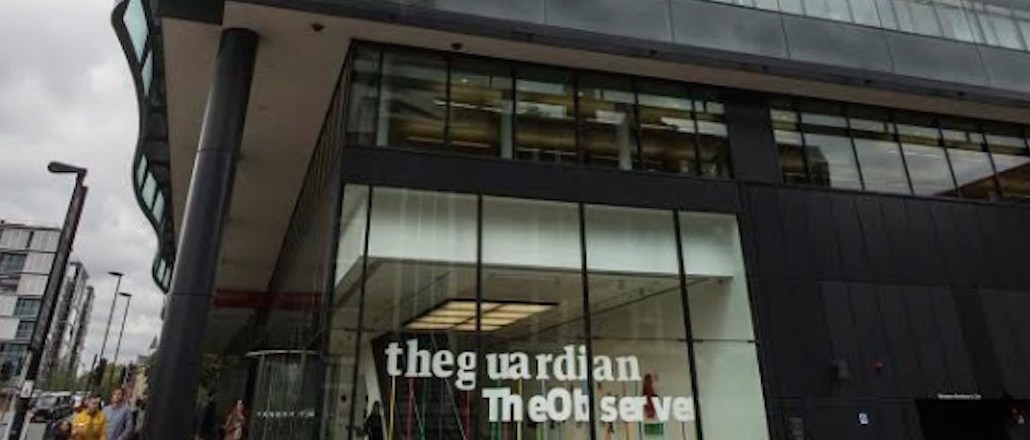Save 50% on a 3-month Digiday+ membership. Ends Dec 5.
On the hunt for new revenue, The Guardian offers ad targeting on trending stories

The Guardian, in the midst of a quest for new revenue streams, is offering advertisers the chance to piggyback on trending stories.
For years the publisher has used in-house analytics tool Ophan to measure reader behavior in real time in order to inform editorial decisions. Now it wants to benefit from that insight commercially.
The new tool, called Pulse, will establish “surging” stories — defined as 300 views per minute on a particular piece of content — with ad impressions then served specifically to those pieces. Additional first-party audience data will be layered on top, so the ads are targeting the advertiser’s chosen audience segments. This could be anything like football enthusiasts; tech lovers; finance and politics enthusiasts; or more general ones such as most engaged users.
Currently the tool works only for display ads, though pretty much any display ad format. In time it will be extended to both video and mobile. Pulse is auction-based, so the price will be based on demand, though the Guardian has set floor prices.
The paint is still drying on the new product, so no advertisers are signed up yet. The publisher will be pitching the new tool, as part of its wider commercial offering, on an agency road show in the coming weeks.
The plan with Pulse is to give advertisers access to the kind of viral pieces that aren’t planned. An example could be the U.K.’s unexpected heat wave last week. Weather is an all-year-round topic.
“Weather is an interesting area for this because it has such a big impact on retail sales,” said Fabien Papani, Guardian’s head of programmatic sales.
Ad position: web_incontent_pos1
The Guardian has been under pressure commercially due to drastically declining print advertising revenues, and is in the midst of a plan to cut costs by 20 percent (or £59 million / $77 million) in the next three years, which includes 250 job losses. It’s on track, with 70 staff having taken voluntary redundancies. Today, a Financial Times report said that the publisher’s operating losses have escalated by a further £10 million to £69 million ($90 million) for the year to the end of March. Naturally, the hope is that tools like Pulse can help boost digital ad yields.
Pulse is the kind of tool that would also have come in handy in the immediate aftermath of the EU referendum outcome. All major news outlets saw meteoric traffic surges, the Guardian among them with 17.2 million unique users in one day — double its average. Its live blog was its most-read article ever with over 10 million page views, and other individual articles also saw major spikes.
“We weren’t selling that,” said Guardian News and Media commercial director Nick Hewat. “We did make some money against it, but we could have made more. But with Pulse the advertiser can now target these stories in real time and in the moment.”
Alex Smith, head of digital planning at Maxus, said guaranteeing an audience is engaged with content is “crucial” because it means agencies can capitalize on real-time moments and interest rather than targeting a topic over a much longer period.
“We have seen time and time again that when the big stories hit, people flood to trusted news sources looking for a formed opinion,” he said “If paying a premium however, a crucial consideration would have to be the creative used, and ensuring it is aligned with the topic targeted. There is really no excuse to not have creative built dynamically when using opportunities like this, especially if agencies want to embrace the opportunity to reach out to users in a much more personal and relevant way.”
Ad position: web_incontent_pos2
News can often be hard to monetize, because a lot of the content can be subject matters advertisers don’t want to be associated with. For instance, news of a terrorist attack will attract lots of audience but it’s not in a context that’s right for most advertisers. Pulse lets advertisers set keywords for any topics they don’t want to appear against, regardless of how many views the story gets.
“Surging news is something we haven’t been able to harness before programmatically, so we welcome that, especially in a quality environment like the Guardian,” said Robin O’Neill, Group M’s managing director of digital trading. “We’d be supportive of it.”
It’s not the first time a publisher has created tools to help monetize traffic surges. The New York Times, Conde Nast, and Bloomberg, have all developed tools to monetize news virality, to varying degrees of success.
“There’s still a valuable role for quality news within the digital media mix and many benefits for brands aligning with these environments,” Maxus’ Smith said.
More in Media

What publishers are wishing for this holiday season: End AI scraping and determine AI-powered audience value
Publishers want a fair, structured, regulated AI environment and they also want to define what the next decade of audience metrics looks like.

Digiday+ Research Subscription Index 2025: Subscription strategies from Bloomberg, The New York Times, Vox and others
Digiday’s third annual Subscription Index examines and measures publishers’ subscription strategies to identify common approaches and key tactics among Bloomberg, The New York Times, Vox and others.

From lawsuits to lobbying: How publishers are fighting AI
We may be closing out 2025, but publishers aren’t retreating from the battle of AI search — some are escalating it, and they expect the fight to stretch deep into 2026.
Ad position: web_bfu


